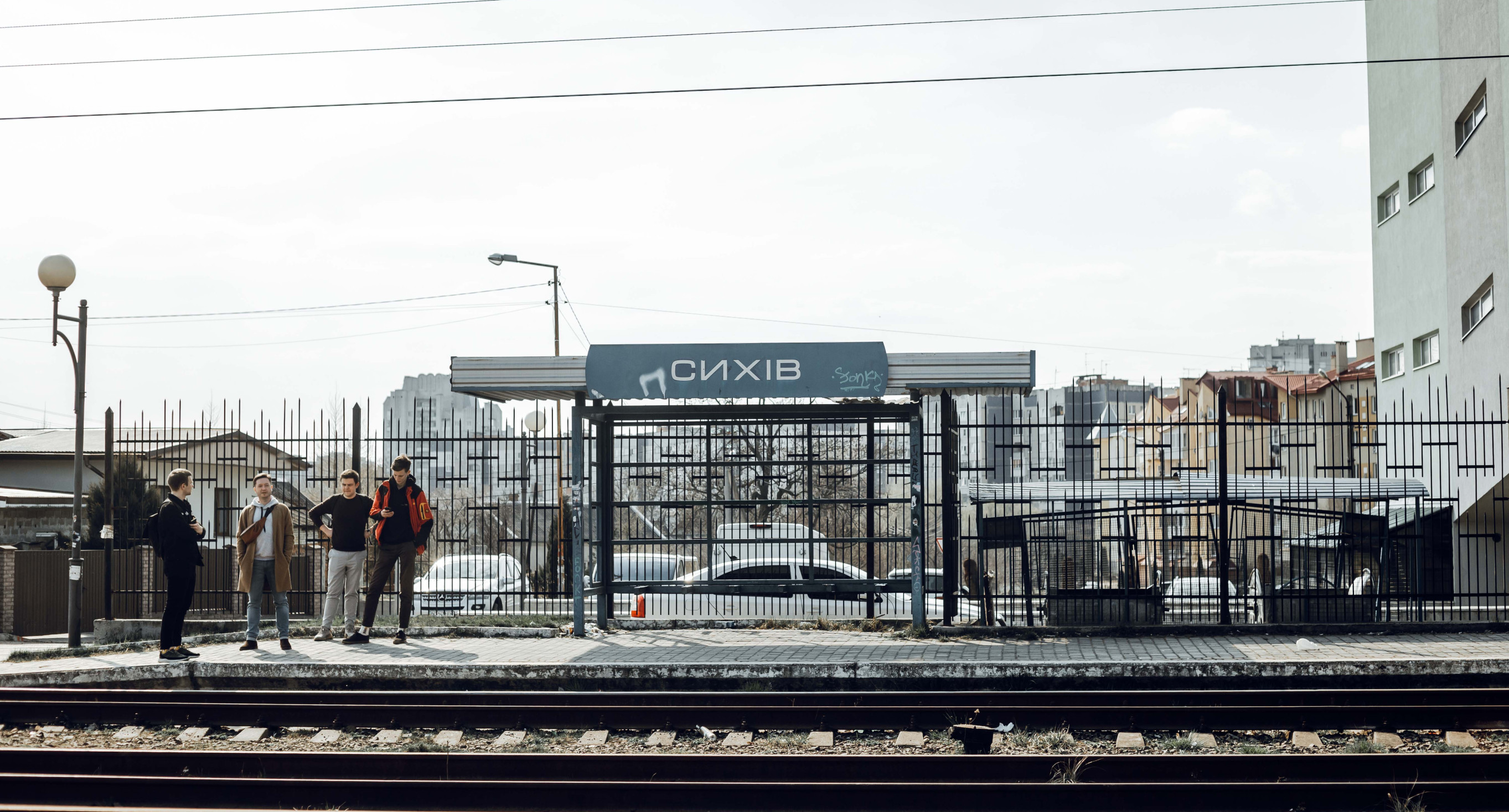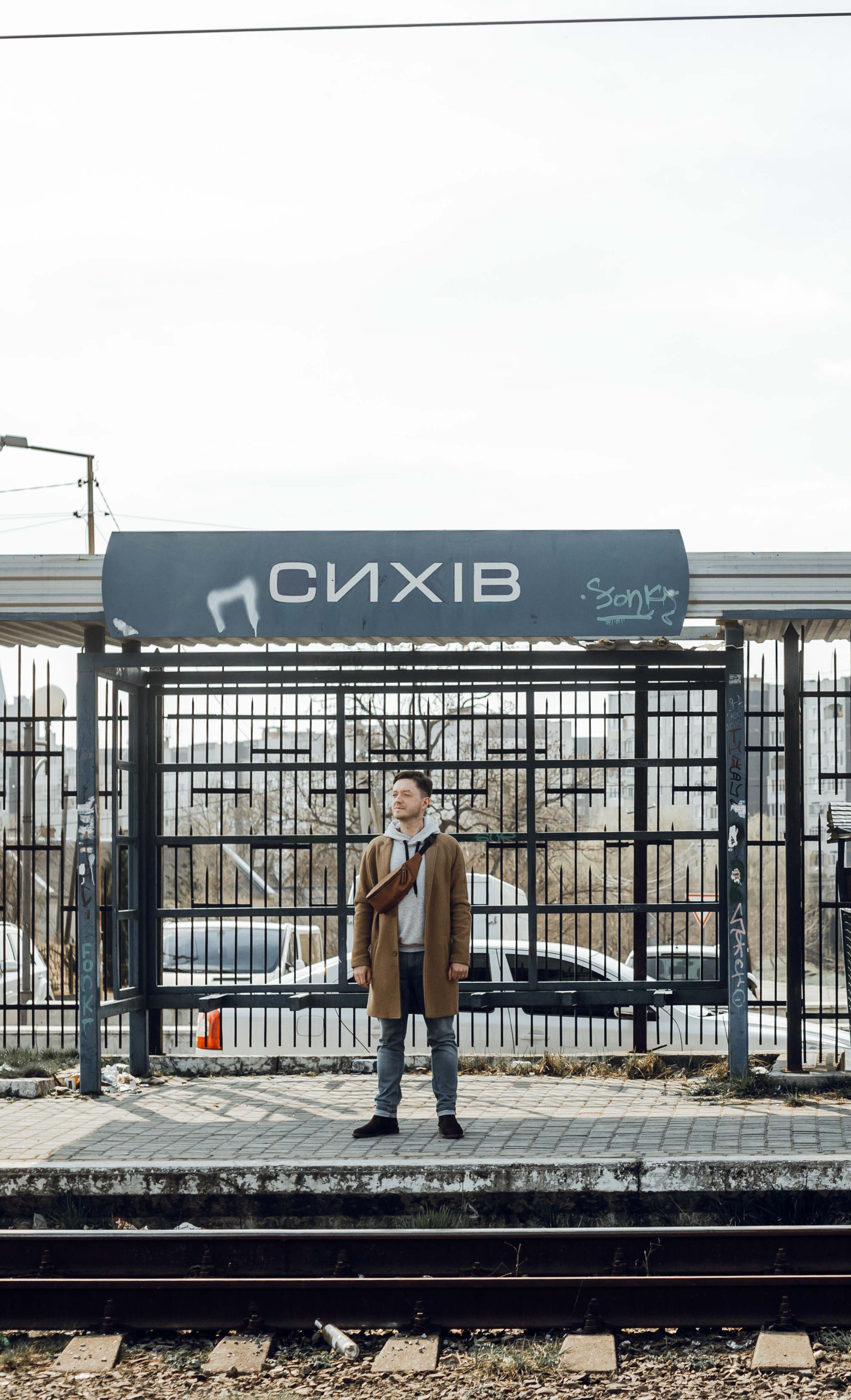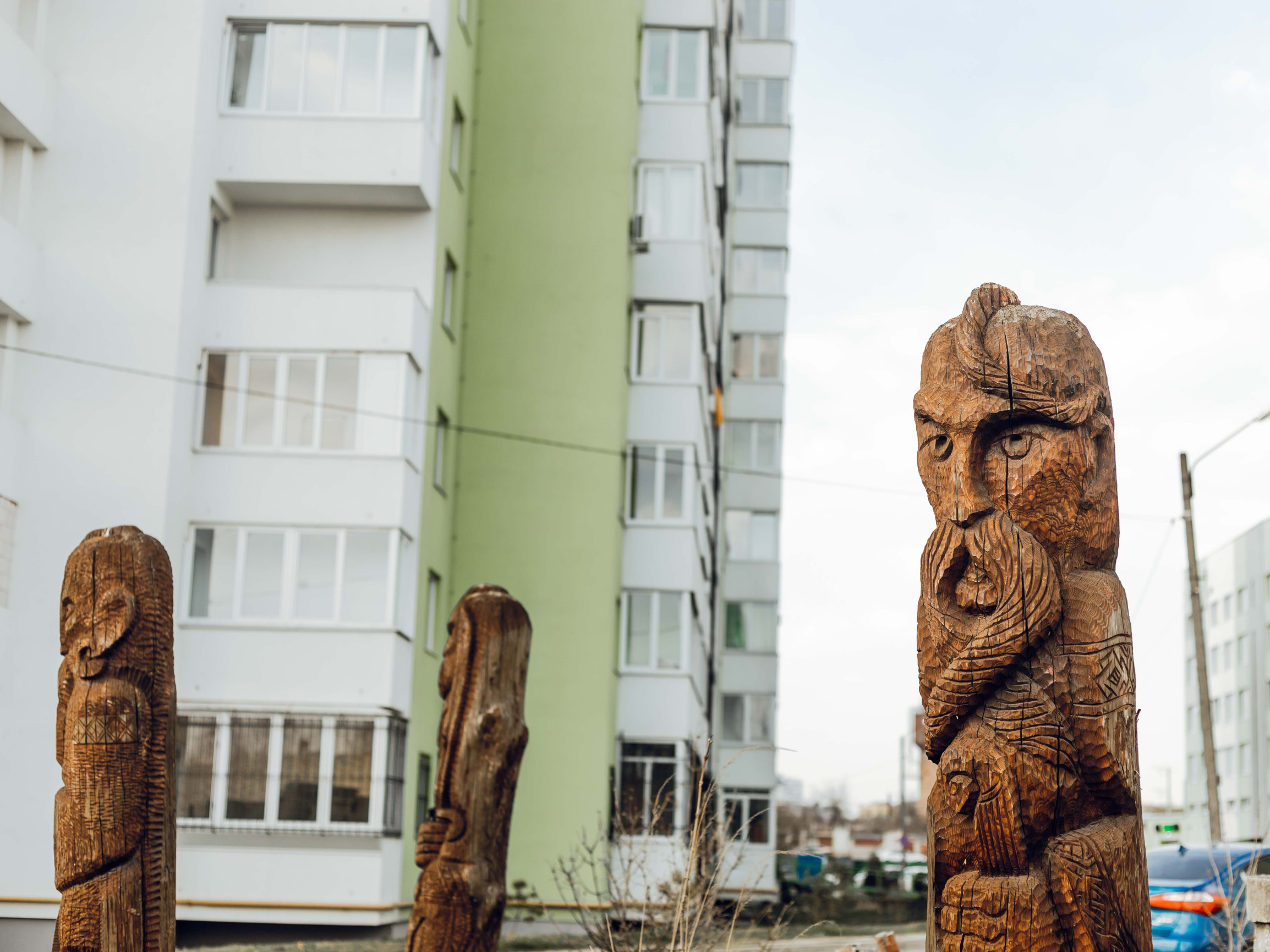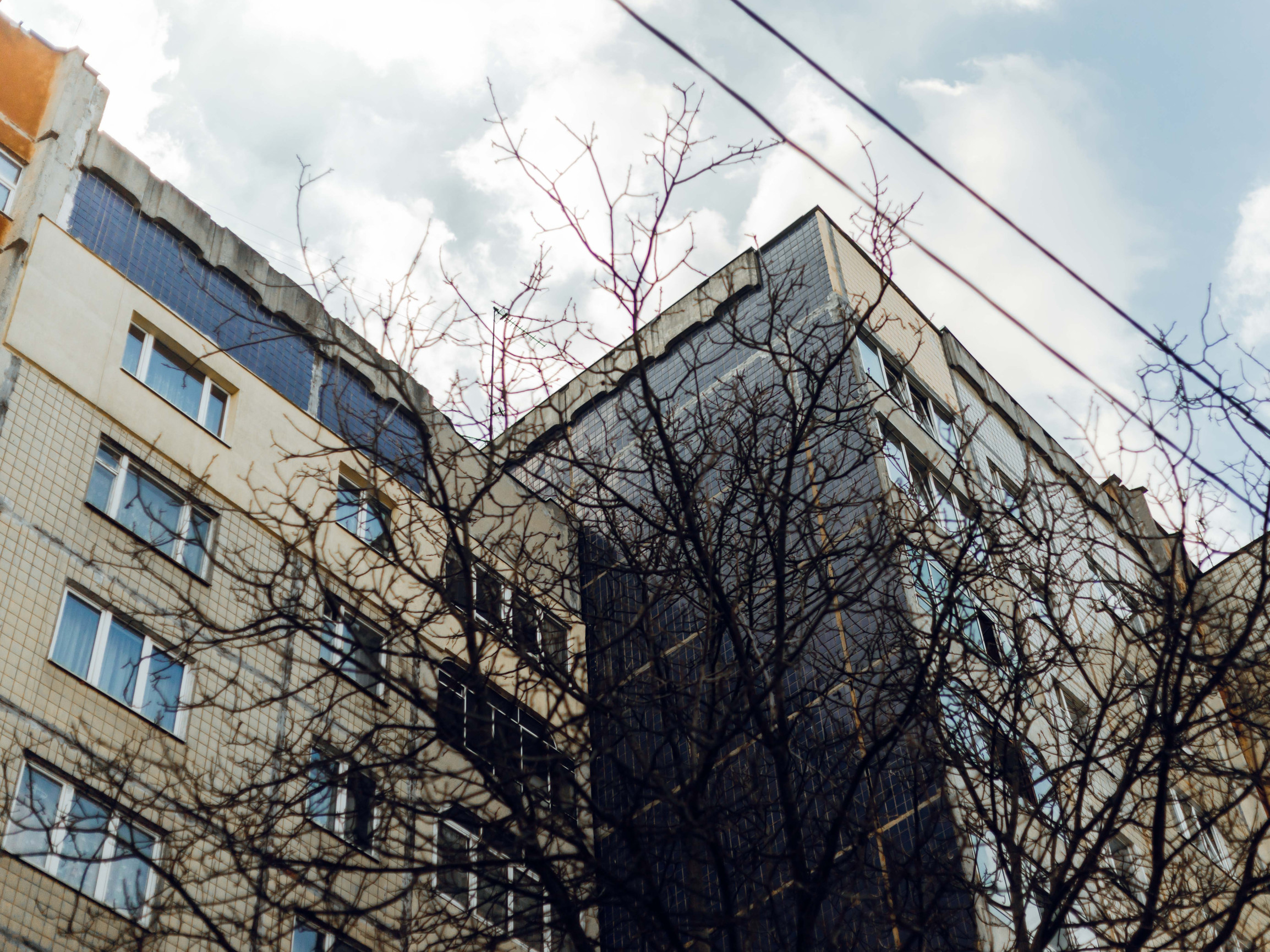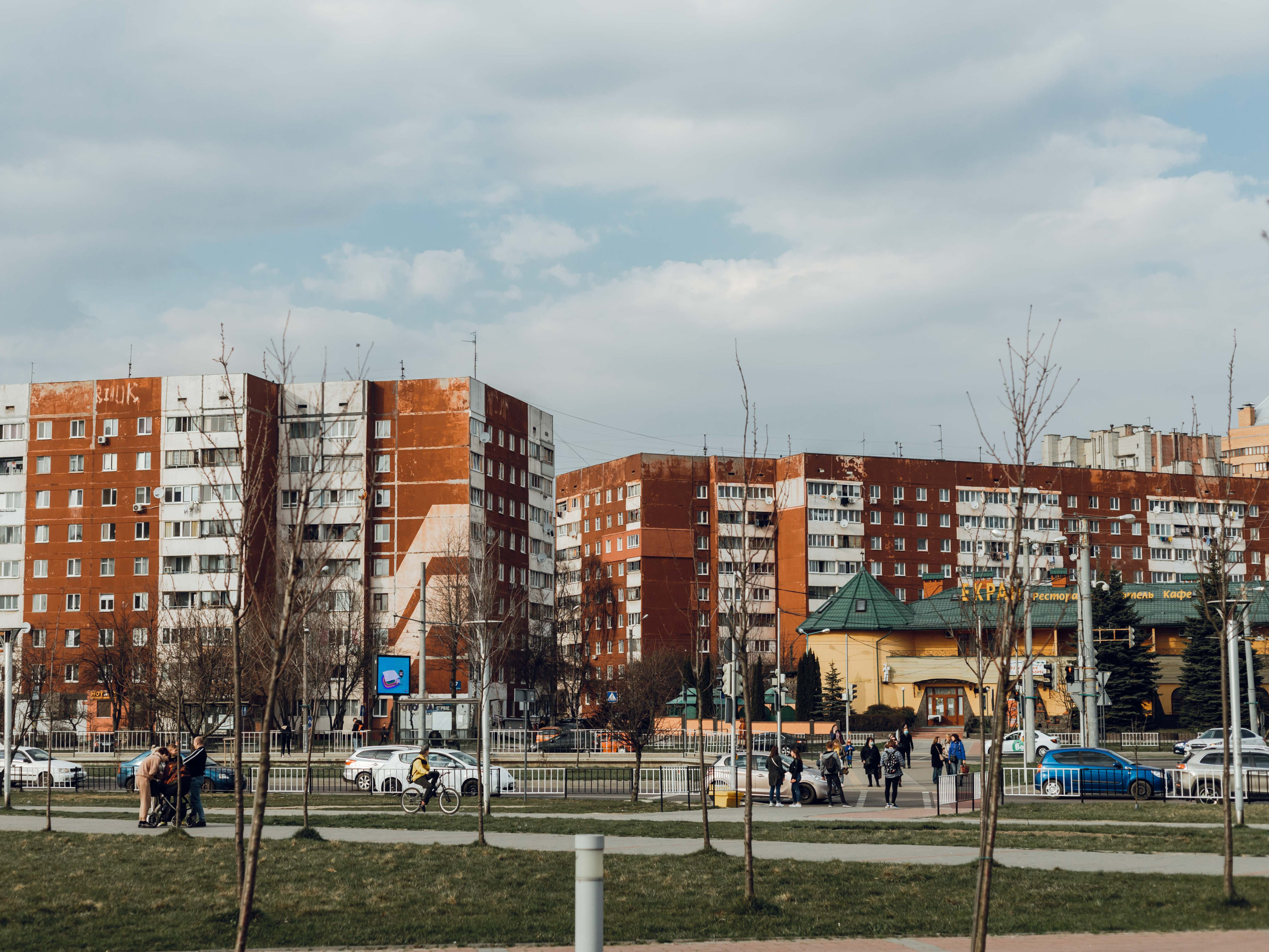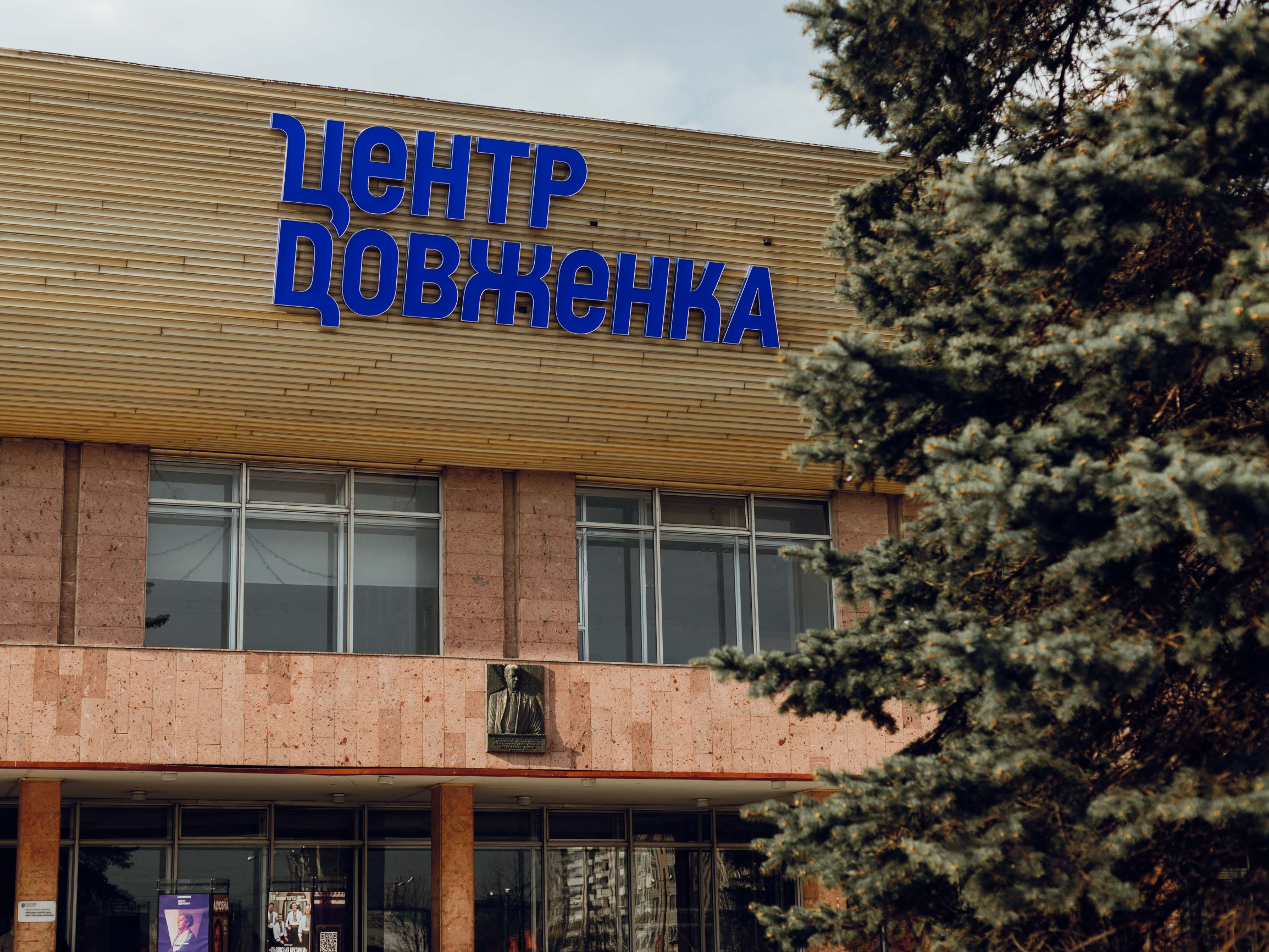What do you know about Sykhiv? Do you know something? Shall we find out? Is Sykhiv a village near Lviv? On the other hand, maybe one of the most criminal districts of Ukraine? Are there more people living in Sykhiv than in Ternopil?
To find out more, we invite you to go on an unexpected journey through the largest sleeping area in the city.
The well-known Lviv poet and translator Ostap Slyvynskyi is already waiting for us at the Sykhiv railway station! The district is calling - let's go!
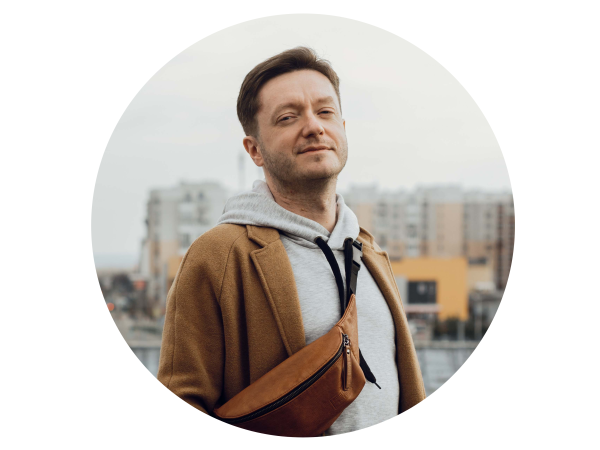

Stop I. "...everything should start from the station..."
It is an old station: the track on which we are standing was built back in 1865. That is, it was one of the first here.
It was laid four years later than the first locomotive arrived in Lviv. In general, at that time, it was very unusual for such a small remote village — Sykhiv — to already have its station.
Back then, in Europe, the track was something like a circulatory system: where the track reached, life developed there, and where it didn't, everything got damaged and died. Therefore, within the XIX century. It was important for the Lviv patricians to bring a track from Kraków to Lviv. Then they took her to the south.
The railway has always been important to me. Although I didn't grow up near a railroad, I did grow up near an airport. I am not such a noble or ancient Sykhiv citizen. I have lived here for only eleven years.
In addition, my childhood and youth passed in the Sknylivok district in the aura of airlines rather than railway connections. For me, the distant sound of jet engines landing or taking off has always been a metaphor for infinity. That is, there is a visible world that you can reach on foot or by some simple land transport, and there is another world that can only be reached by plane.
When I moved to Sуkhiv, I began to hear the sound of a train from time to time. It was a completely new experience for me! Because I live in Santa Barbara and at quiet times of the day, especially in this humid, foggy weather, you can hear the trains coming. Moreover, the horns are too loud to hear.
In addition, I realized that this was a substitute for what I was missing, the sound of airplanes. The railway track is also a kind of metaphor for distance, of such infinity.
Maybe that's why this "Sуkhiv" station is a symbolic point from which we start. It seems to me that everything should begin and end with the station.
Where: corner of Soniashnykova street and Maidanna St.
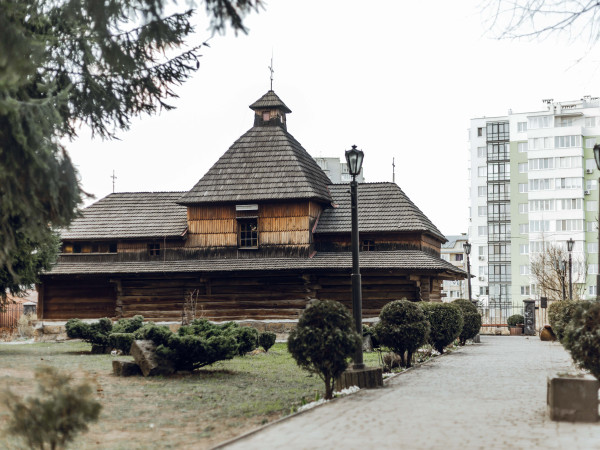
Stop II. "...how can there be a real ancient wooden church here?!"
I was surprised that so few Lviv residents know about this church. I asked many people where, in their opinion, the oldest wooden church in Lviv is. And everyone said: "Shevchenkivskyi hai." But this Lviv church did not move anywhere from its place. As for the churches that stand in the grove, these are, of course, all churches moved from other places. And this one has been standing in its place since the 1600s. That is, it is unique not only for Lviv but even globally.
I was also surprised when I first came across it. Because it wasn't like I had read about it somewhere at first. In general, when I moved here, there was very little information about Sykhiv. It is now "Sykhiv Media", and there are various tourist resources - more or less accessible - there was a project from the Center of Urban History about the spaces of Sykhiv.
In addition, at that time, Sykhiv was blocked by various stereotypes. And I have to admit that when I moved here, I knew almost nothing about Sykhiv. Moreover, I did not know that this church was here. And when I first came here, I was just shocked! The first thought that came to my mind was imitation. Because how can there be a real old wooden church here?!
There are myths about this church. And the people of Sykhiv themselves are happy to spread them. In particular, the fact that it is a Cossack church. The date 1654 as the time of construction of this church came from somewhere. And what is 1654 associated with our country? Pereiaslav Council, Khmelnychchyna, Cossacks, that is, the Cossack Church.
Recently, documents were found that prove that it is older, that it has been standing here since at least the 1600s. That is, it was still long before Khmelnychchyna.
In general, I even heard this: not only did the Cossacks pray here, but they also built this church. There was nothing for the Cossacks to do during the war except to build a church under the walls of the city they were besieging so that they could pray here before the battle!
If you dig deeper, many unexpected things can be extracted from the history of Sykhiv. Because from the 16th century, Sykhiv and Zubra were villages bought by the Lviv magistrate. They did not have owners in the form of any specific individuals; they belonged to the city. However, the city council decided to rent out these villages. It was called dzierżawa in Polish.
If, for example, some landowner wanted to engage in "agribusiness", he could rent these villages. And one of these facts is unexpected for me.
I teach the history of Polish literature at the Franko University and the period of Romanticism, the middle of the 19th century.
Somehow, I came across the fact that for some time, the tenant of the village of Zubra was the last Polish romantic poet Kornel Ueyski. And I live under the Zubra! And here, this figure of the Polish romantic begins to merge into such a paradoxical plot.
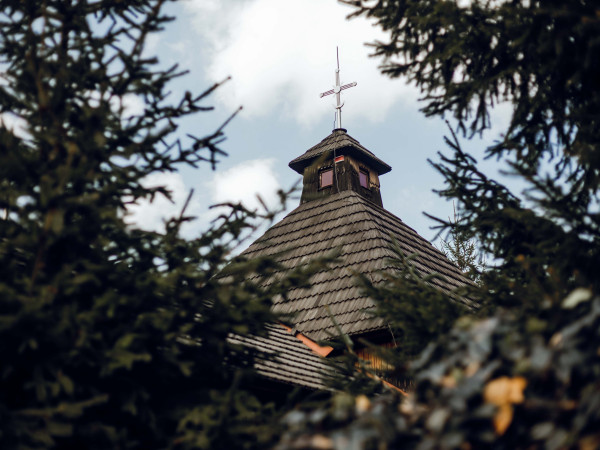
There are many such unexpected paradoxical things in Sykhiv. Here, everything is much more closely intertwined than it seems. It is very cool that there is this old Sykhiv.
And it is very cool that in Soviet times, the idea that they wanted to move the church to Shevchenkivskyi hai was not implemented. It was still left to the Sykhiv community.
In addition, here she is - a little timeless island. When I just want to escape, get out of my time — 20 minutes on foot from home — and I am already in another dimension.
Here, these services are very modest. The church is tiny. I have never seen great religious services here. It is the complete opposite of the Church of the Nativity of the Holy Virgin.
It is prestigious to go there; there are fashionable glass doors, and a good "Dolby high-end" sound system is available - everything is as it should be. But if we are talking about such a real spirituality, it is here for me.
Where: 1a Sadybna St.
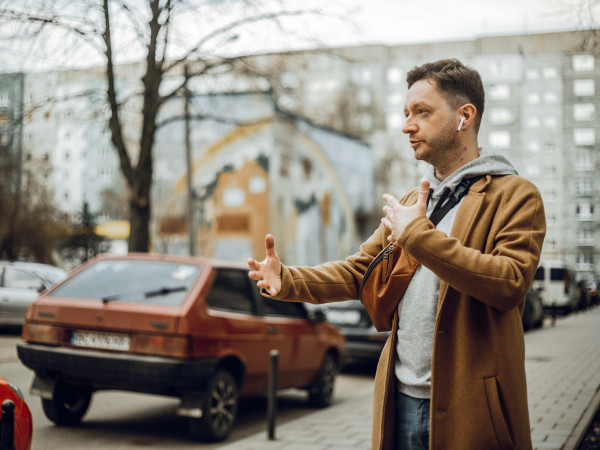
Stop III. "...a district that speaks with inscriptions..."
Here on Syhivska Street, we are in the oldest "new" Sykhiv. Because we came here from the old Sykhiv, and the so-called "new" Sykhiv began to be developed in 1979.
These greenhouses, with remnants of green paint on them, are the oldest multi-apartment buildings in Sykhiv. Аccordingly, murals have been preserved here since the 80s.
Sykhiv is a district that speaks with inscriptions; I would even say so. I will tell you about the inscription with which Sykhiv met me. The slogan was written in such a gate of our house: "Fight for the district, not for the race!"
Then I realized that, in general, everything is fine with urban identity in Sykhiv, that local identity is more important than any imaginary ideas of the nation there.
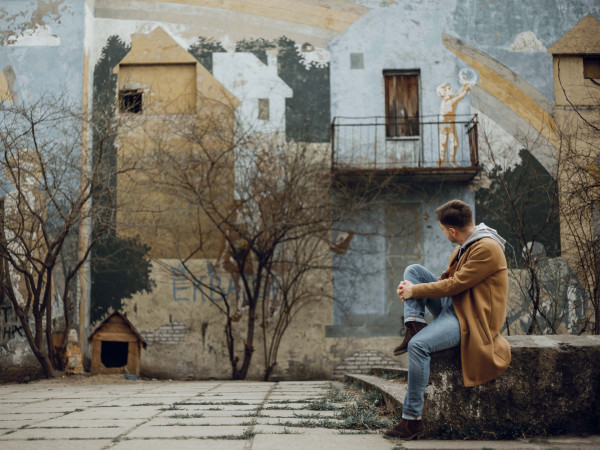
It seems to me that if you are looking for such a truly urban culture and space in Lviv, then Sykhiv is it. And in particular, thanks for that graffiti to everyone. There is a lot of physical space for them here, and they fit very organically here.
And this is a transformer substation. There is nothing special about it. But she is very cool in her way. In general, this is probably my favourite yard in Sykhiv.
There is a kind of Soviet romance, like in those teenage films of the 70s and 80s. It is also such a time machine.
A bit of desolation on the one hand, and on the other hand, there is such a melancholy about it, such a pleasant melancholy.
But the best view is from the playground. This is a completely different Sykhiv for me. It's Banksy! It is Sykhiv Banksy of the eighties - pay attention!
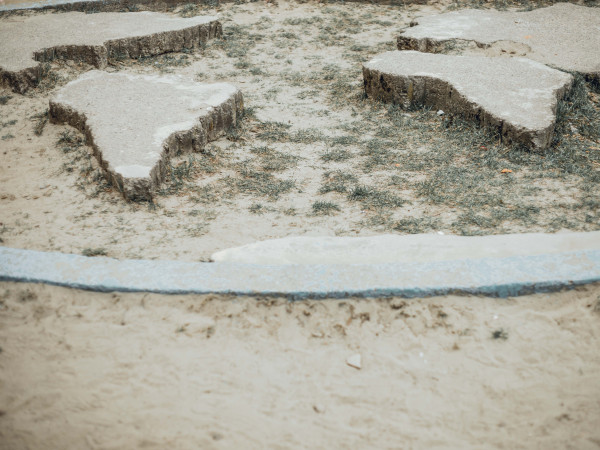
What's cool is that the transformer booth has a balcony that doesn't have any doors. The only inhabitant of this balcony is that painted boy. Altogether, it is somehow so beautiful and absurd to me. And it reminds me of some such old Tbilisi.
And this playground is a separate story. I even regret that I did not have such a cool playground when I was a child. It's nice. Where children are playing, there is a world map.
It seems that it should also perform some developmental functions. You can hang out in South America. The little person hangs out in Florida. He has already gone to Alaska. It is just a cool idea.
There is the "kidnapping of Europe" plot, and the Sykhiv plot - "kidnapping of Australia".
Where: 30 Syhivska st. (inner courtyard).
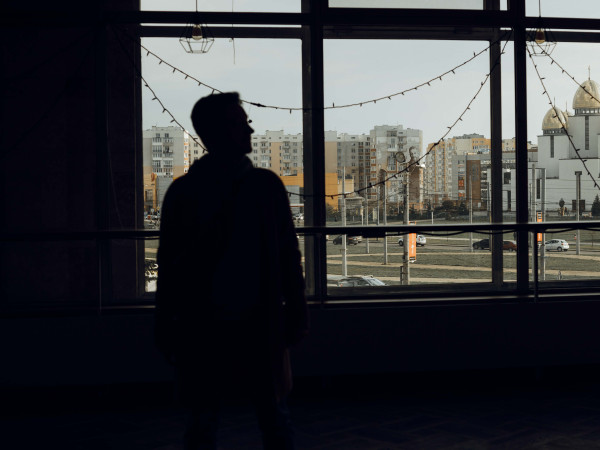
Stop IV. "...15 min. on foot from home — and I'm already at Sadovska's concert!"
In the 18th year, these premises were handed over to the city department of culture, and it is gradually and somehow very stubbornly becoming a cultural magnet in Sykhiv.
For me, in the 19th year, Mariana Sadovska's concert was such a shock. She performs on world stages: German, American. And this is a superstar. 15 min on foot from home, and I'm already at the concert.
And it is cool that this centre of the district was formed spontaneously. Because of this square... Of course, it would be nice to somehow re-plan it because its entire architecture was honed to the fact that people would rather pass here than linger.
I don't like being here, in this square. But the Dovzhenko centre is gradually becoming a place where you want to come. If it weren't for the lockdown, I think he would have taken another step forward.
There are such ambitions that everything would take place here: both children's events and art performances - for a completely different audience, for people who would love to come here.
And nearby there is also this Ekran restaurant, which has its legend. I know these legends about "Ekran" from people of my dad's generation, let's say, who in the 90s already did various cool things.
The Ekran restaurant was then a place where, unlike most other such places in Lviv, strangers were not allowed. It was only for "their own".
The fact that they now call themselves such a small "restaurant" is like a retired Al Capone who has had children and has already begun to lose his temper.
Restaurant! How many jaws were broken in this restaurant in the 90s?
Where: 81 Chervonoi Kalyny Ave.
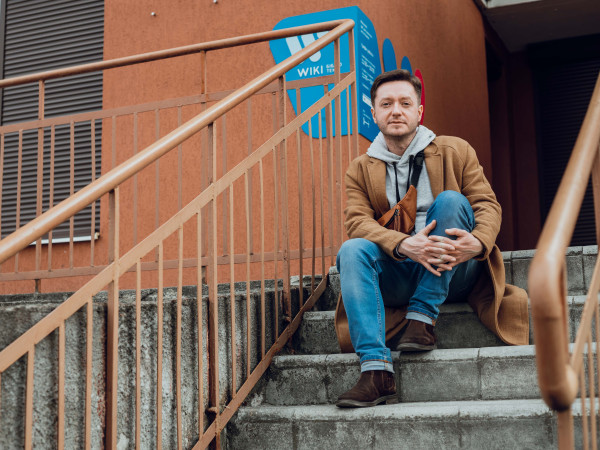
Stop V. "...a library that is a kind of anti-library..."
For me, the WIKI library is proof that everything depends on people, on human enthusiasm.
I remember sometime when I moved to Sykhiv, a year or two later, the Head of the Lviv Department of Culture and then the People's Deputy Iryna Podoliak asked me what I wanted to do in Sykhiv.
But she asked me to answer very sincerely as a person who lives there. I then said: "Nothing. I don't want anything; I want to leave."
It seemed to me that there could be nothing in Sykhiv because such a closed circle had formed here. Because nobody wants anything in Sykhiv, right?
When I moved here, this area seemed so inert to me that I didn't understand from which end it could be moved. Everyone sees themselves here as temporary. For me, such people as the founders of the WIKI library are people who simply, at some point, took and somehow so easily broke this closed circle with their little finger.
In the beginning, the idea seemed to me utopian, crazy - because what is a WIKI library? It is a library that is a kind of anti-library. Why books if we believe on Wikipedia?
But all this fits perfectly: "wiki" is more like a magnet that attracts people to a specific place.
I read because I want to build such a global encyclopedia; I become included in such a global process. And then, when I heard the idea of "Lviv Open Lab", it became clear to me from the beginning that it was necessary.
I think that thanks to "Lviv Open Lab" and the WIKI library, Sykhiv can become such a place where parents with children, children themselves, and teenagers, especially, come to do something here. Here you can design, manufacture, and study something.
It is something incredible for me, this idea that has turned from semi-utopian into reality. I think that Sykhiv is a bit like such a blank board: on the one hand, it is difficult to start writing something on it, and on the other hand, when you start this process, you can draw many new things there. He is great at this.
Where: 58 Chervonoi Kalyny Ave.
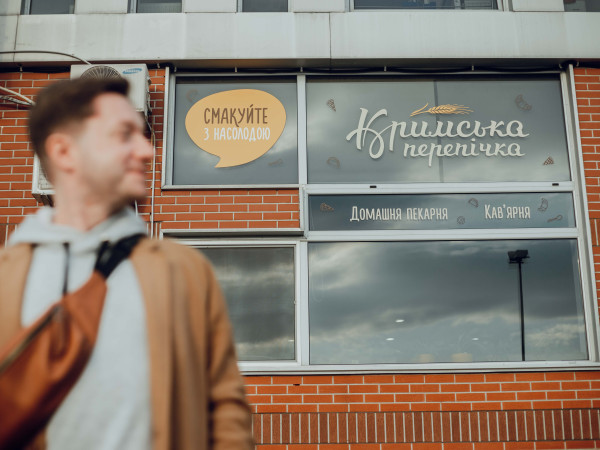
Stop VI. "...because it's Sykhiv, because it's just a bakery, and what's the highlight here..."
We talked about the WIKI library as the embodiment of the impossible. Not so long ago, Yaroslav Hrytsak mentioned his colleague, the American historian Omelian Pritsak, who said: "Why to take on what is possible to do, one must do the impossible."
And to me, this WIKI library and the same "Krymska Perepichka" are some such things that seem to have started from impossibility.
And the founders of "Krymska Perepichka" themselves - sisters who moved from Simferopol in 2014 - at first doubted that anything would work here because this is Sykhiv. After all, it's just a bakery, and what's the highlight here?
To be honest, I also doubted at the beginning. And now I see that it was the necessary place for everyone. Such a place where you come and feel at home.
I do not rule out that Sуkhiv can become a tourist area - anything can happen. But for now, we need such very homely cafés, where you just come, and there are books on the shelf - you can read.

I liked to come here for a while and read books about Crimea. Or when the business started around the book "The Case of Vasyl Stus", I didn't have it at home, and there was a big hype around this book.
It was easier for me to go to "Krymska perepichka" than somewhere in the library.
I know that if there is a bookcrossing somewhere in Sуkhiv, it is here. You can take something for yourself, but you should also bring something of your own.
By the way, they say that it works the same way with toys: some children like local toys so much that they take them home.
But it is not convenient for parents, and they bring some other toys from home that their children no longer play with. And here, too, there is such a circulation of toys.
Besides, what I also really like here is that they are very open and dynamic about the menu and what they cook.
Unexpectedly, this is my place. I'm not a fan of candy stores, confectionery, etc. I love coffee. But don't sit in coffee shops with some cheesecake. And the atmosphere of this place is so mine that I come here often.
Where: 62a Chervonoi Kalyny Ave.
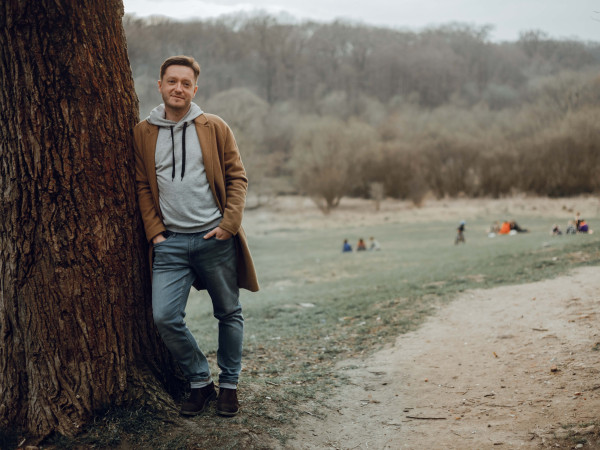
Stop VII. "...Lysheha wrote about her..."
Sometimes I like to come here to these remains of the dam that held this pond - the so-called "pioneer lake" - and imagine what it was like to vacation here when it was still a full-fledged reservoir with boats.
Now it is lacking. There are these plans to restore the lake. But firstly, this is the problem of the river, which must be solved.
I have one memory of this river. Until the 14th year, the poet Oleh Lysheha lived here in Sykhiv. He died, unfortunately, in December 2014. In the last period of his life, he did not live permanently but, from time to time, lived in Sykhiv. We were neighbours.
One day, Oleh Lysheha starts a conversation again: "I walked by the river today, it already springs there, the grass is green, it felt so summery to me." I'm starting to wonder what river he's talking about. What kind of river is this?
Then I realized that he was walking above the Zubra River. And I sometimes think to myself how much one must be such an idealist and how much one must see into the core of things to see this river as a river. And he saw her like that.
He has the text "Ella Fitzgerald's Kiss", and he mentions that river there. He writes: "The Zubra River flows from Lviv through this valley, and then through random fields - there, free, it will be washed by the snow and everything will be forgotten... Muddy, dishonoured, but visible."
And somehow, he missed so much, longed for that pure Zubra. And each time I tell this story, some people go to see the Zubra because Lysheha wrote about it.

In fact, in 1982, this lake was drained. The construction of Sykhіv had already begun, the new Sykhіv had already been under construction for three years, and the lake still existed. However, it has already become very shallow.
It is said that this is because they built a very large bomb shelter near the bus plant. And this bomb shelter seemed to block the water horizon. That's how the underground arteries that supplied water to the Zubra River were blocked. The Zubra River began to dry up, and so did the lake.
Instead of a lake, swamps began to form, and finally, in 1982, this lake was successfully drained. And the river was turned into a sewage collector, as they like to do in our country. We have such a tradition in Lviv: turning rivers into sewage collectors.
And before our two rivers were turned into sewage collectors, we had a chance to connect the basins of the Baltic and Black Seas here because here, in fact, there was about one kilometre between the sources of the Zubra and Poltva rivers.
That is, you could swim to the source of the Zubra, pull out your boat, and move it about one kilometre and then travel to the Baltic Sea. So, if someone wanted to cut his way during a round-the-world trip, he could sail through the Sykhiv!
For now, this is a place for picnics. And there are many mosquitoes here.
Where: the lawn of the Saint Pope John Paul II Park (between Lisna and Hnata Hotkevycha streets)
Interview and text — Yurii Zaremba
Video — Oleh Zvarych
Photographed by Halyna Kuchmanych
Idea and curatorship — Oleksii Fedak
